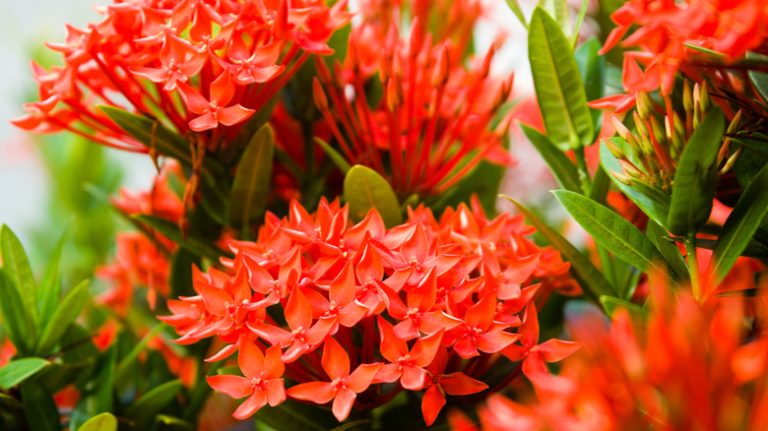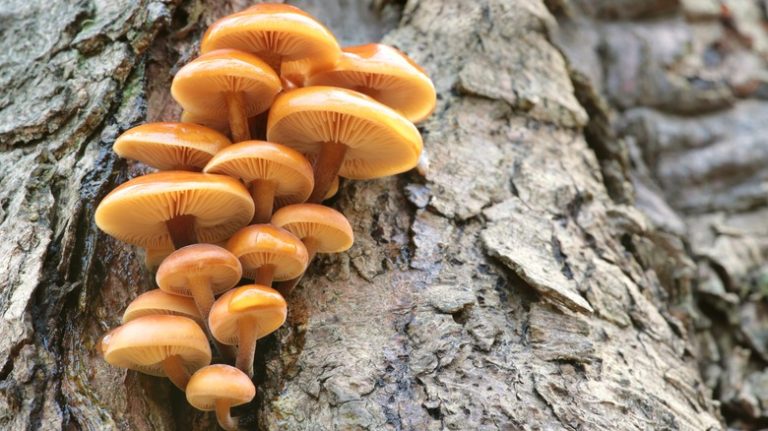Knowing how to manage pests is essential to keeping your property and gardens healthy. Pests can quickly infest your plants and cause damage, leading to a decline in the overall appearance and health of your landscape. No one wants to wake up mourning the loss of their carefully cultivated plants and cherished foliage, thus it is important to consider ways to effectively manage pests and prevent infestations.
One of the first steps in managing pests is understanding their biology and how they thrive. Many pests, such as aphids and scales, are parasitic and rely on the water-conducting tissues of plants to survive. They often find their way onto your landscaped trees and shrubs, sucking the sap and weakening the plants. Some pests, like the mistletoe, have evolved ingenious ways to stick onto the branches of host trees, making their presence more visible.
Identification is key when managing pests. Each type of pest has its own unique features and characteristics. For example, the mistletoe is a parasitic plant that grows on trees, with its green foliage visible below the host tree’s branches. Knowing how to properly identify and manage pests can help you take the necessary steps to control their growth and prevent further damage.
There are various ways to manage pests, depending on the severity of the infestation and your personal preferences. Some individuals may opt for natural methods, such as introducing beneficial insects or making homemade organic pest control sprays from ingredients like soapy water. Others may choose to use chemical pesticides to quickly eradicate pests. It is important to consider the potential effects of these methods on the environment and other beneficial animals.
In conclusion, managing pests is a crucial part of keeping your property and gardens healthy. By thoroughly knowing the pests that can infest your plants and taking the necessary steps to control their growth, you can prevent damage and maintain the beauty of your landscape. Whether you choose to use natural or chemical methods, always consider the long-term effects on the environment and other organisms. With proper identification and management techniques, you can effectively manage pests and enjoy a thriving garden.
12 Things to Know about Mistletoe
Mistletoe is a parasitic plant that grows on the branches and leaves of trees. It is best known for its association with the holiday season and the tradition of kissing under the mistletoe. Here are 12 things to know about mistletoe:
1. Most mistletoe species are hemiparasitic. This means they obtain some of their nutrients from their host plants, but they are also capable of photosynthesizing and producing their own food.
2. Mistletoe has a unique biology. It is able to invade the tissues of its host plant, including the water-conducting vessels. This allows mistletoe to extract water and nutrients from the host.
3. Mistletoe has a wide range of hosts. It can be found on a variety of trees, including oaks, elms, maples, and pines.
4. Mistletoe can cause harm to its host. It can weaken the host tree by drawing nutrients and water away from it. Severe infestations can even lead to the death of the host.
5. Mistletoe is known for its association with the holidays. It is often used as a decoration during Christmas time, and the tradition of kissing under the mistletoe dates back to ancient times.
“6. Mistletoe is also important for wildlife.” Many animals rely on mistletoe for food and shelter. Birds, in particular, eat the berries and spread the seeds through their droppings.
7. Mistletoe is a versatile plant. It can grow in a variety of settings, from forests to woodlands to gardens.
8. Mistletoe can be found all over the world. While it is most commonly associated with Christmas traditions in Europe and North America, mistletoe can be found in many regions around the globe.
9. Mistletoe is native to Australia. The country is home to over 90 species of mistletoe, making it one of the most diverse regions for mistletoe.
10. Mistletoe spreads through a unique method. The berries of mistletoe are sticky, which allows them to adhere to the beaks and feathers of birds. The birds then spread the berries to new hosts as they move around.
11. Mistletoe is not just a holiday plant. It has been used for medicinal purposes, and some species of mistletoe are used in complementary cancer therapies.
12. Mistletoe is considered a symbol of fertility and good luck. It has been associated with various folklore and superstitions throughout history.
Overall, mistletoe is a fascinating plant with a rich history. Whether you associate it with holiday traditions or appreciate its ecological importance, mistletoe is an intriguing and unique plant to consider.
Happy Holidays
During the holiday season, many people enjoy decorating their houses with festive and colorful ornaments. One popular decoration is mistletoe, which has been valued for centuries for its symbolic and aesthetic value.
Mistletoe is a parasitic plant that grows on various trees, often in the shape of a dwarf shrub. Its showy white berries and decorative green leaves add a touch of charm to any home. However, mistletoe is not only cherished for its beautiful features, but also for its significance in folklore and tradition. Hanging mistletoe has long been associated with holiday festivities, and it is a common practice for people to exchange kisses under the mistletoe during this time of year.
Although mistletoe is popular and widely recognized, few people know about the plant’s intriguing biology and its exploitation of the hosts it grows upon. Mistletoe has an ingenious and versatile adaptation known as a haustorium, which allows it to penetrate its host plant’s tissues and extract water, minerals, and even sugars. This parasitic behavior benefits the mistletoe, but it can cause harm to the host tree, particularly if infestations are allowed to grow unchecked.
If you find your trees infested with mistletoe, it is important to manage the infestation before it causes significant damage. There are a couple of ways to control mistletoe growth, such as pruning out the infected branches or utilizing specialized mistletoe removal services. However, it’s worth keeping in mind that mistletoe has evolved and adapted to exploit its hosts, so removing it completely can be a challenging task.
Mistletoe is not the only plant with parasitic tendencies. Another example is the nuytsia, also known as the “mistletoe of Australia.” This plant, which lacks leaves and chlorophyll, attaches itself to the roots of various trees and relies on them for survival. Its distinctive orange flowers add a splash of color to the dry Australian landscape.
Whether you’re decorating your home with mistletoe or enjoying the sight of nuytsia during the holiday season, it’s important to consider the impact these plants can have on the ecosystem. While they may be aesthetically pleasing, they can also disrupt the balance of natural resources if left unmanaged. This is why universities and agricultural organizations research and develop resources to manage and control mistletoe and other parasitic plants.
In essence, mistletoe and other parasitic plants play an important role in biology and ecology, showcasing the wily nature of evolution and the interconnectedness of organisms. So, when you hang mistletoe or observe nuytsia during the holidays, take a moment to appreciate the biology behind these fascinating plants and the delicate balance between their beauty and their potential to cause damage.
How to Manage Pests
Growing plants in your garden can bring great joy, but it also attracts pests that can cause damage. Knowing how to manage pests is essential to maintain a healthy and beautiful garden. Here are some best practices to control pests effectively:
Identify and Monitor Pests
- It is important to know what pests you are dealing with in order to implement the right control methods. Identify the pests that you see in your garden and research their habits and life cycles.
- Regularly monitor your plants for any signs of pest infestation, such as chewed leaves or wilting. Early detection allows for timely intervention.
Implement Natural Pest Control Methods
- Use natural predators like ladybugs and spiders to control pests. These beneficial insects feed on harmful pests and help maintain a balance in your garden.
- Consider planting pest-resistant varieties and companion plants that repel pests. For example, marigolds can deter aphids, while basil can repel mosquitoes.
- Properly maintaining your garden, such as removing weeds and dead leaves, can reduce hiding places for pests.
One specific pest to watch out for is the mistletoebird, which infests trees with mistletoe. This parasite can cause the decline of host trees and impact overall forest health. To control mistletoe, affected branches should be pruned and destroyed.
Use Chemical Control as a Last Resort
- If natural control methods are not effective, consider using chemical pest control products as a last resort. Always follow the instructions on the label and use them sparingly.
- When using chemical pesticides, it is important to be mindful of their impact on pollinators like butterflies and bees. Apply pesticides in the evening when pollinators are less active.
The growth of pests can also be prevented by improving sanitation in your garden. Regularly clean up fallen leaves and fruits, as they can attract pests. Additionally, provide adequate water and consider mulching to reduce weed growth and conserve moisture.
In Australia, mistletoe removal is important due to its impact on trees and folklore. The iconic Nuytsia floribunda, also known as the Australian Christmas tree, is a parasitic plant that attaches to various hosts. According to mythology, witches used this plant to make brooms and remove resources from its host trees.
In conclusion, managing pests requires a combination of knowledge, prevention, and intervention. By implementing natural control methods and using chemical control as a last resort, you can keep your garden healthy and thriving.




